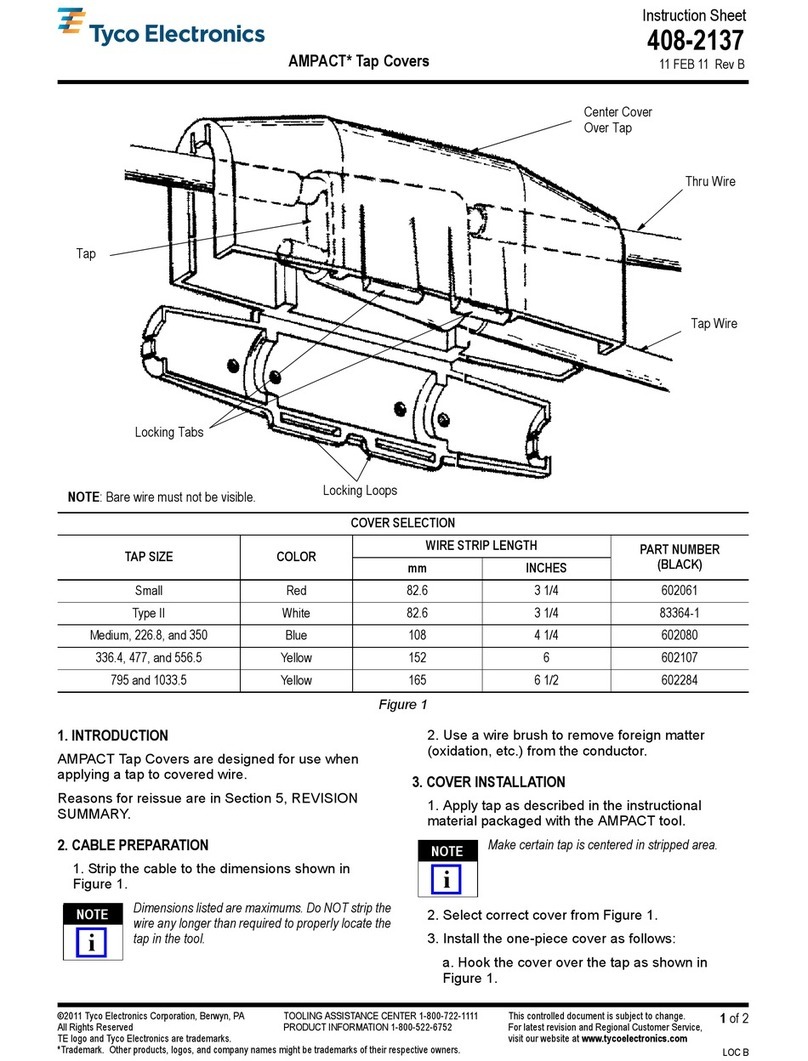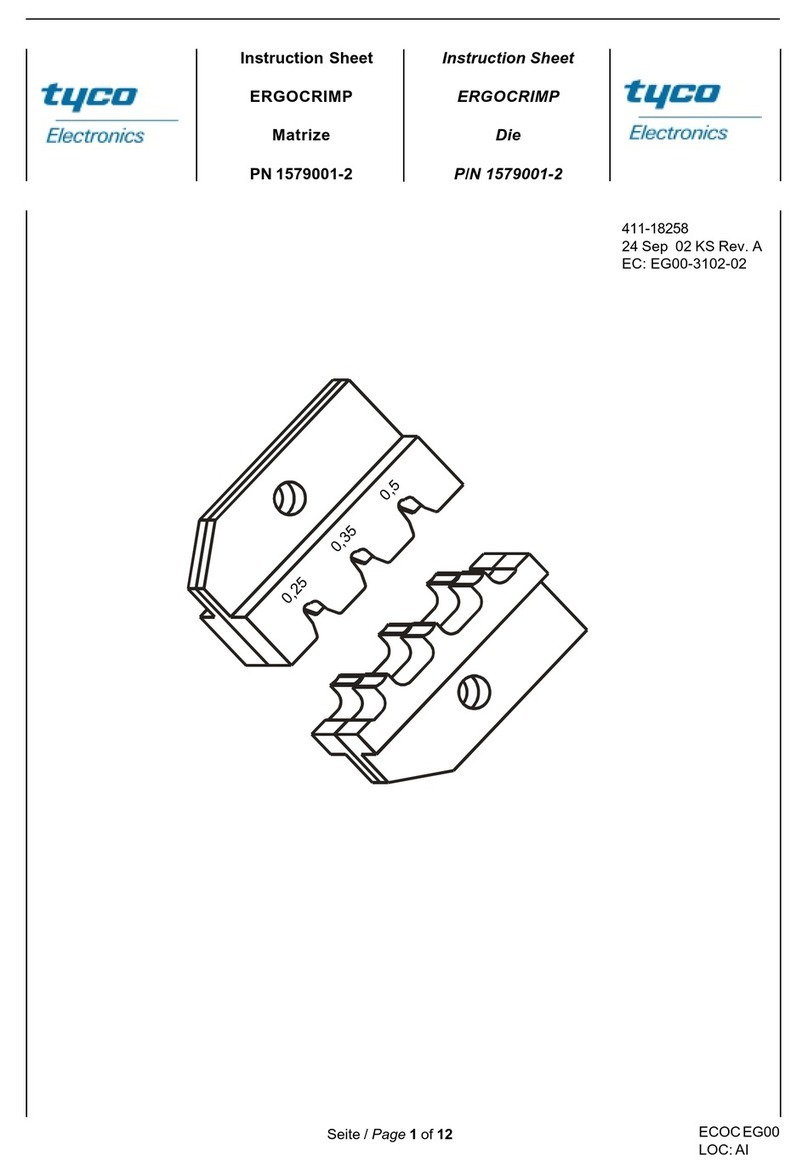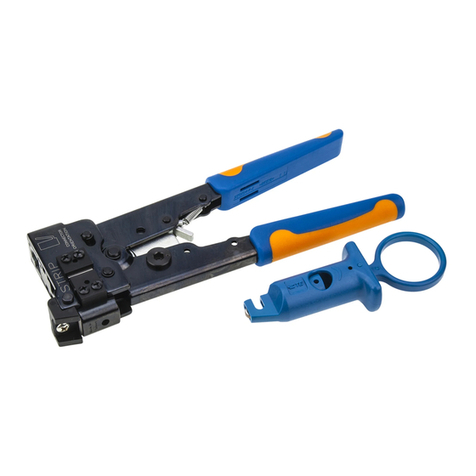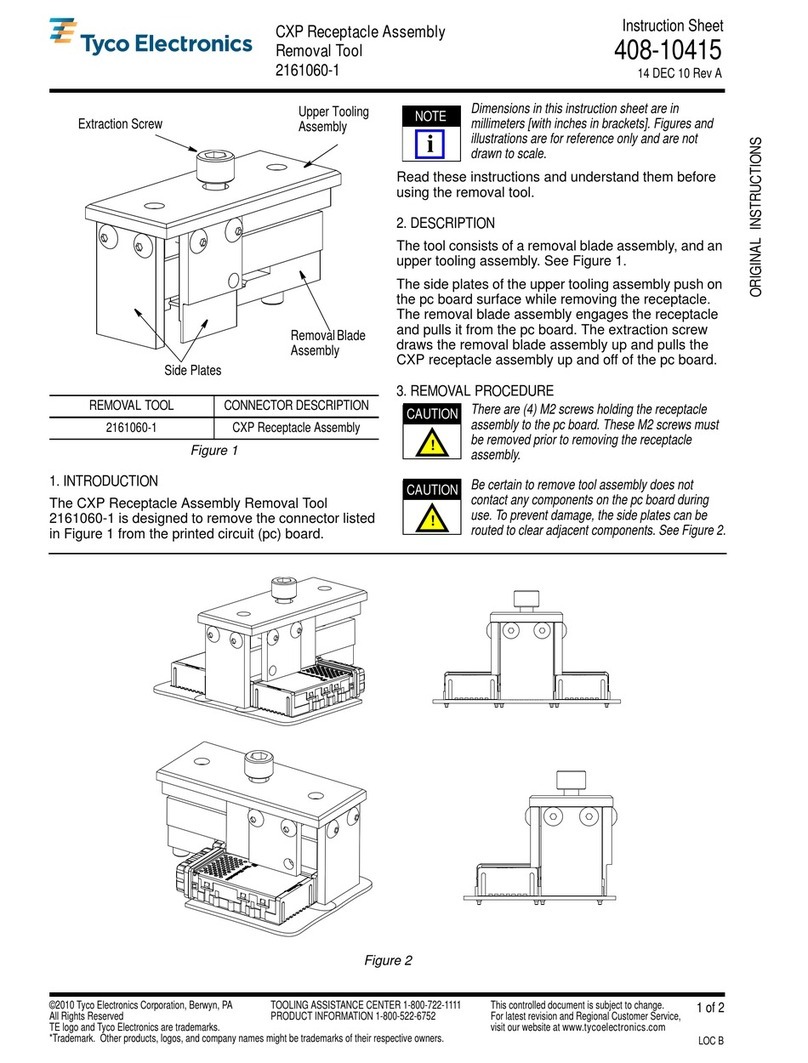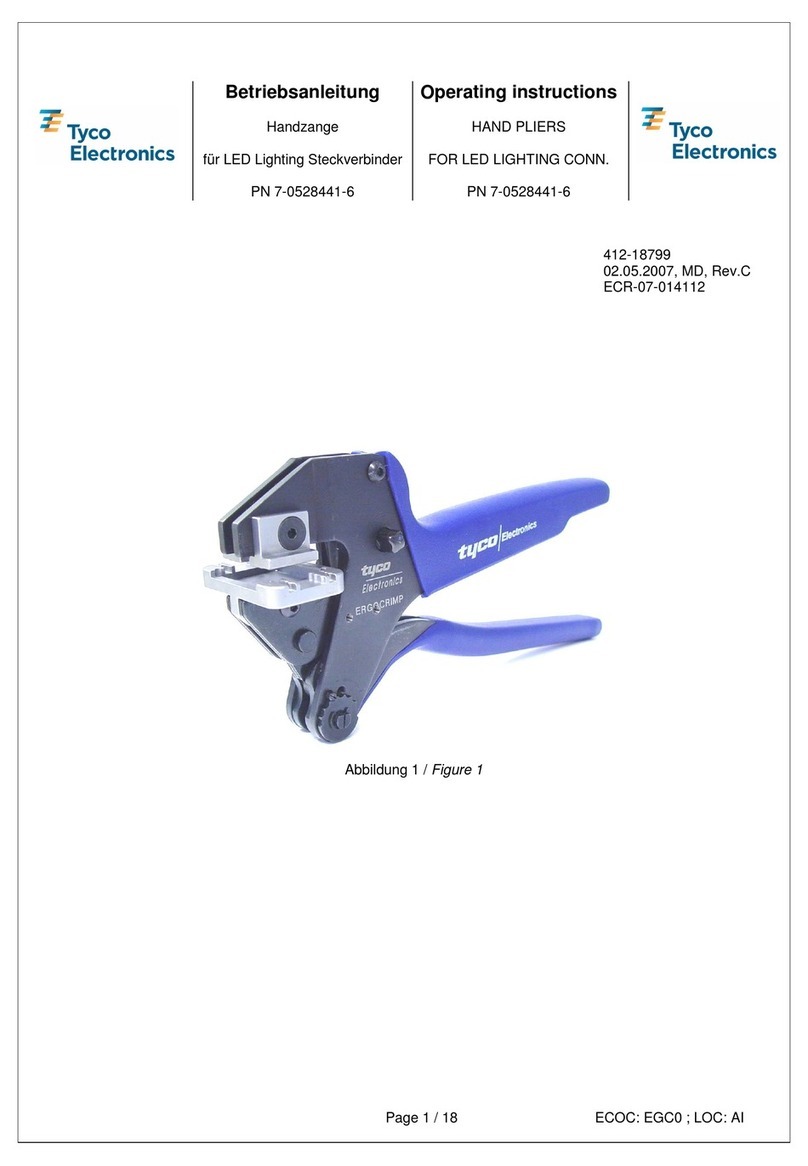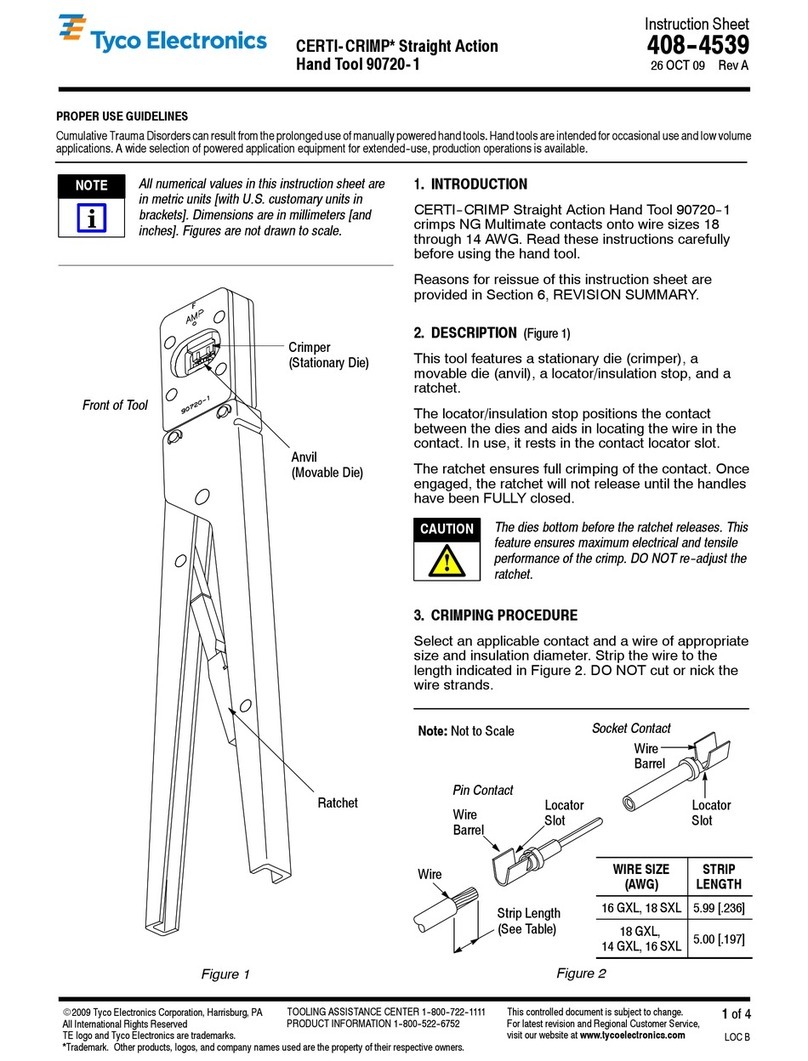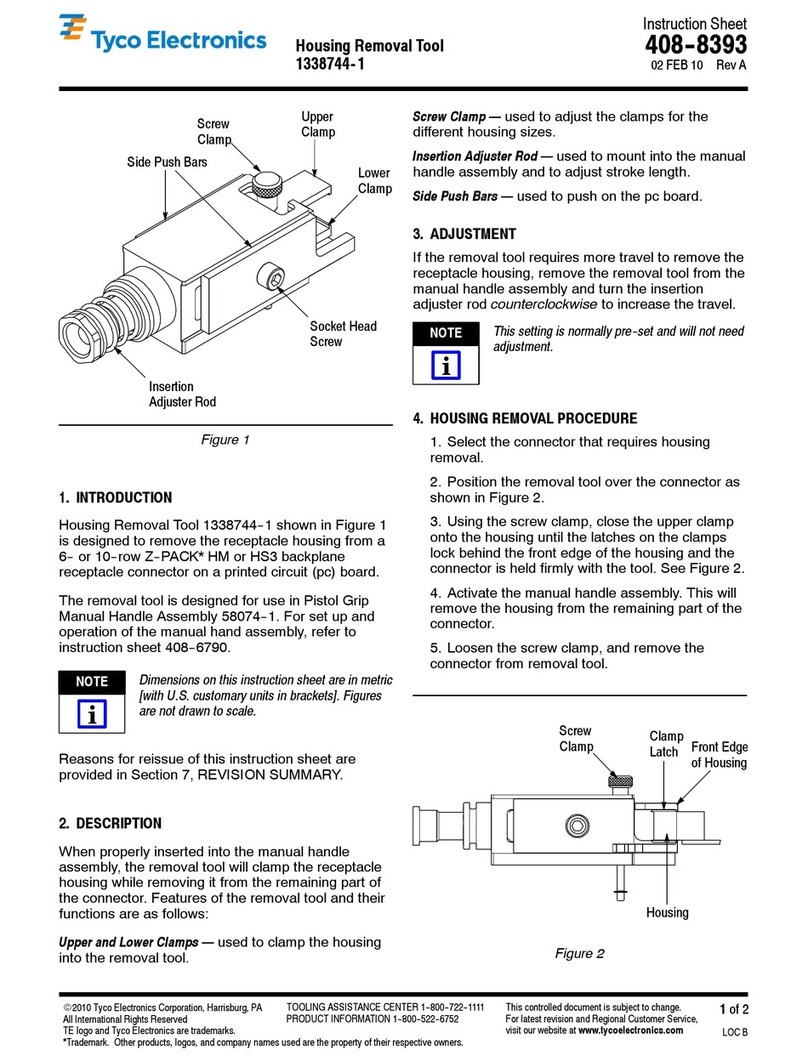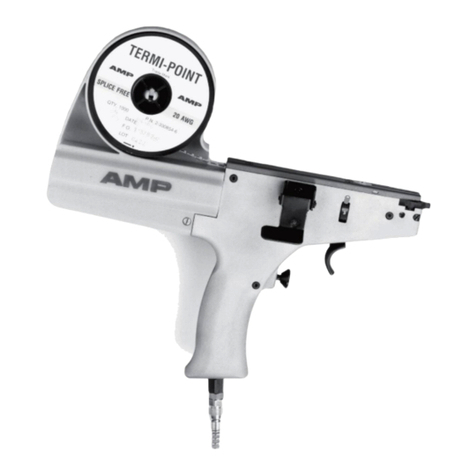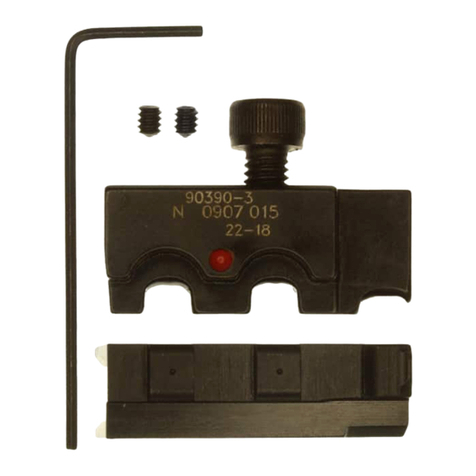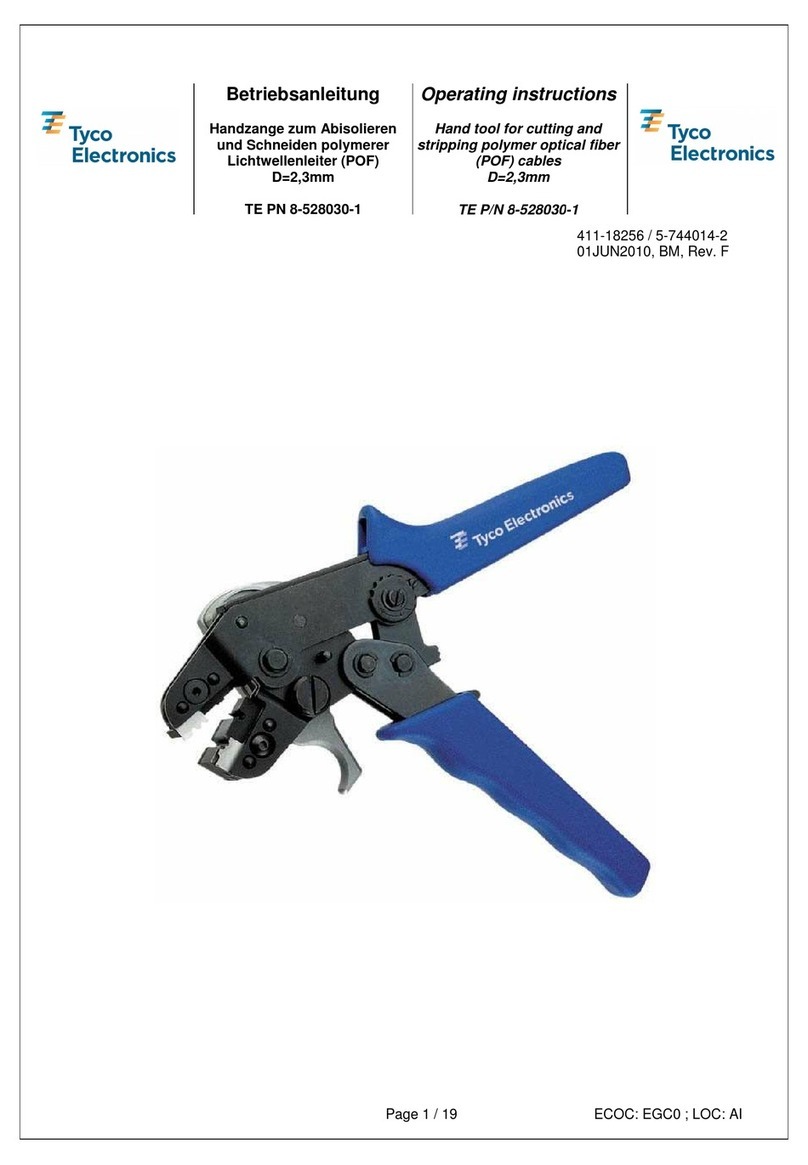
Page 4 / 17 ECOC: EGC0 ; LOC: AI
PN 8-744013-1 412-18911 Rev.A
1 Umgang mit der Betriebsanleitung
Die Betriebsanleitung muss ständig an dem Werkzeug verfügbar sein.
Jeder, der mit Arbeiten an dem Werkzeug beauftragt ist, muss die Betriebsanleitung kennen und
beachten.
Die Firma Tyco Electronics lehnt jede Haftung für Schäden ab, der durch Nichtbeachten von Hinweisen
an dem Werkzeug oder in der Betriebsanleitung entsteht.
Die Betriebsanleitung ist vom Benutzer des Werkzeugs um Anweisungen aufgrund bestehender
nationaler Vorschriften zur Unfallverhütung und zum Umweltschutz zu ergänzen.
2 Grundlegende Sicherheitshinweise
Das Werkzeug ist nach dem Stand der Technik und den anerkannten sicherheitstechnischen Regeln
gebaut.
Beim Ausführen von Arbeiten, wie Aufstellen, in Betrieb nehmen, Einrichten, Betreiben, Ändern der
Einsatzbedingungen und Betriebsweisen, Warten und Instandhalten des Werkzeugs, sind die in der
Betriebsanleitung vorgeschriebenen Ausschaltprozeduren zu beachten.
RoHS Information
Informationen über das Vorkommen und Standort jeglicher Substanzen die den RoHS-Richtlinien
(Restriction on Hazardous Substances) unterliegen sind auf der folgenden Website zu finden:
http://www.tycoelectronics.com/customersupport/rohssupportcenter/
Dort „Find Compliance Status…“ anwählen und die entsprechenden Teile-Nummern eingegeben.
2.1 Zuständigkeit
Das Werkzeug darf nur von ausgebildetem und autorisiertem Personal betrieben werden. Die
Zuständigkeit des Personals für Bedienen, Rüsten, Warten und Instandhalten ist vom Benutzer des
Werkzeugs klar festzulegen und einzuhalten. Insbesondere ist die Zuständigkeit für Arbeiten an der
elektrischen und pneumatischen Ausrüstung festzulegen. Solche Arbeiten bleiben nur ausgebildeten
Fachleuten vorbehalten.
Eigenmächtige Veränderungen an dem Werkzeug schließen eine Haftung des Herstellers bzw. Lieferers
für daraus resultierende Schäden aus.
2.2 Hinweise zum Einrichten und Betreiben des Werkzeugs
Das Werkzeug darf nur in technisch einwandfreiem Zustand sowie sicherheits- und gefahrenbewusst
eingerichtet und betrieben werden.
Vor jeder Inbetriebnahme ist zu prüfen, ob alle Sicherheitsvorrichtungen, insbesondere Schutz-
abdeckungen, angebracht sind und einwandfrei funktionieren.
Schutzabdeckungen dürfen nur bei Stillstand und elektrisch ausgeschaltetem Werkzeug entfernt werden.
Insbesondere Gehäuse und Abdeckungen dürfen nur von fachkundigem Personal entfernt werden.
Achtung:
Beim Berühren von Stromführenden Teilen besteht Lebensgefahr!

